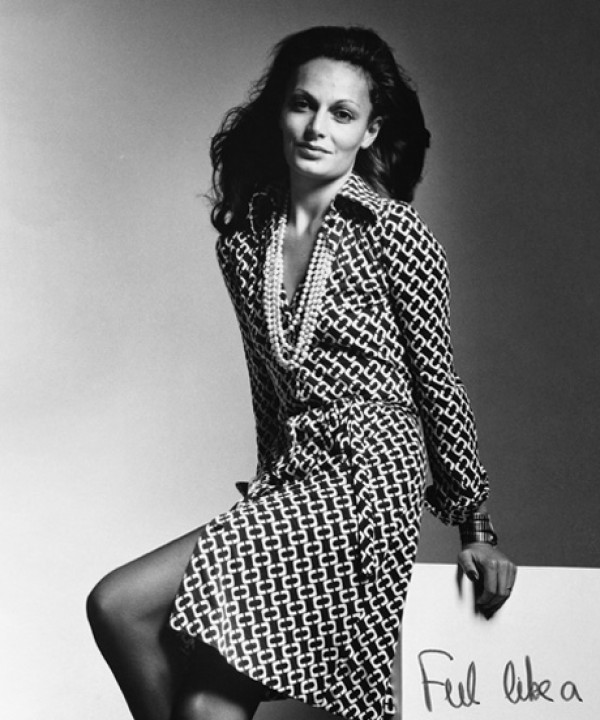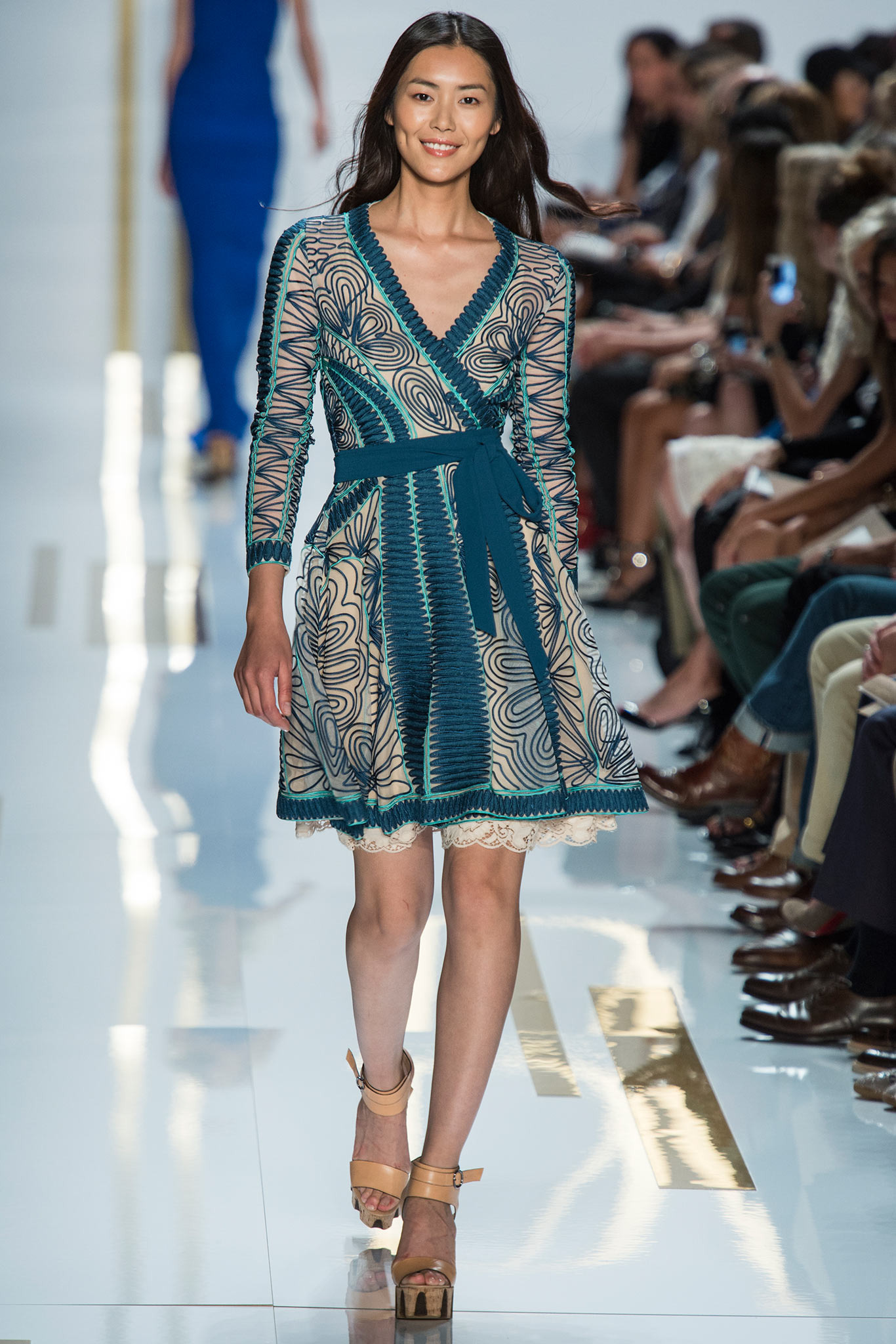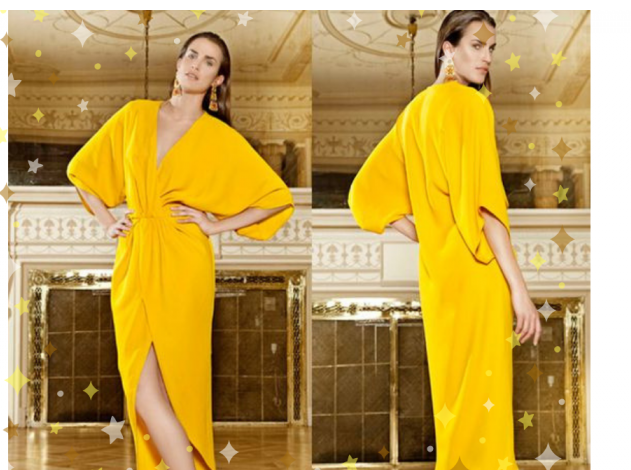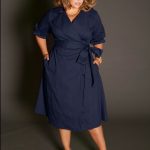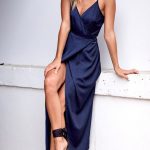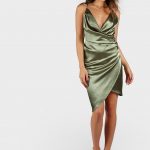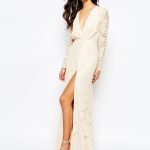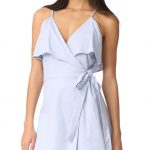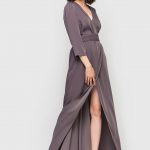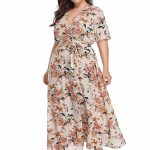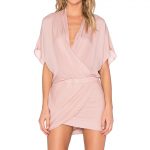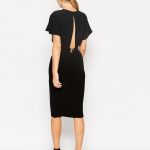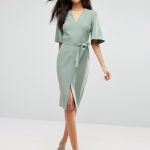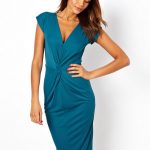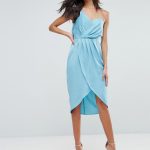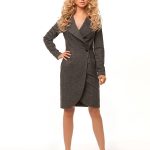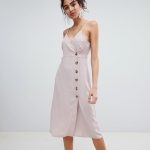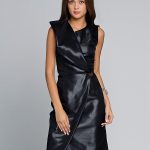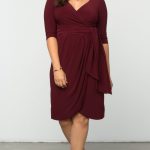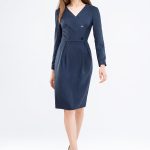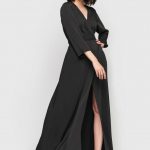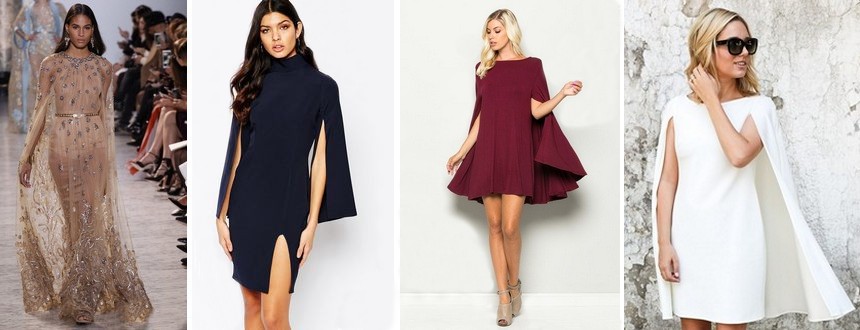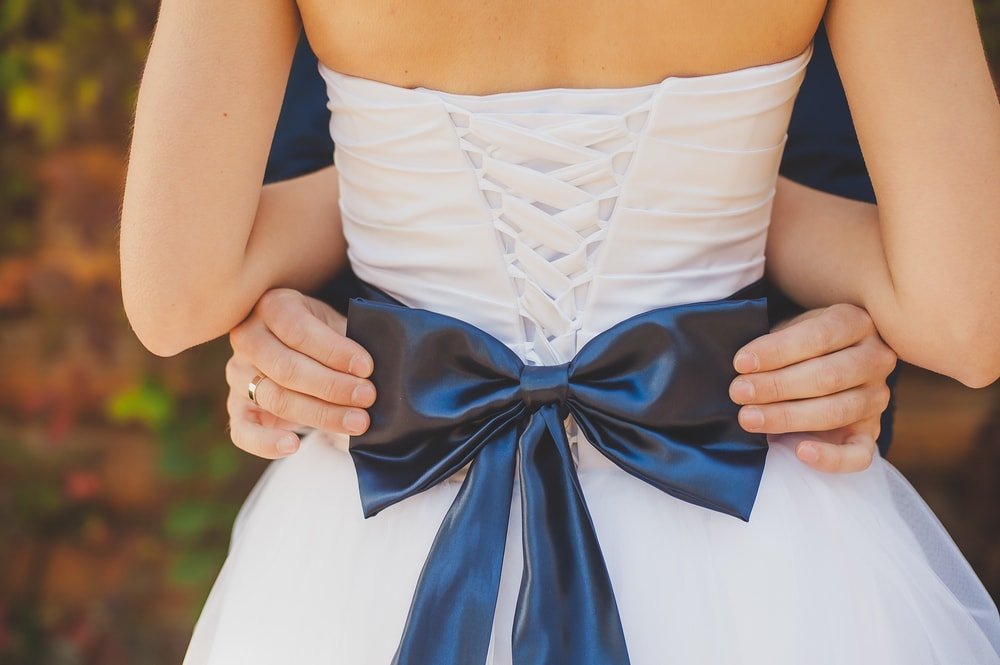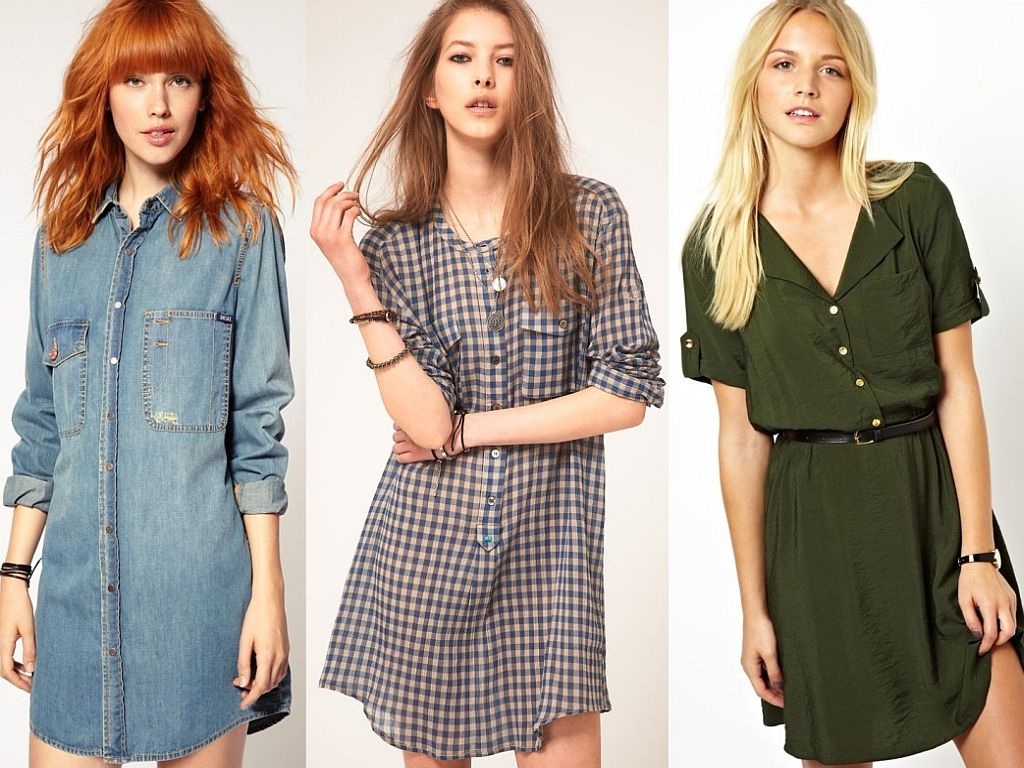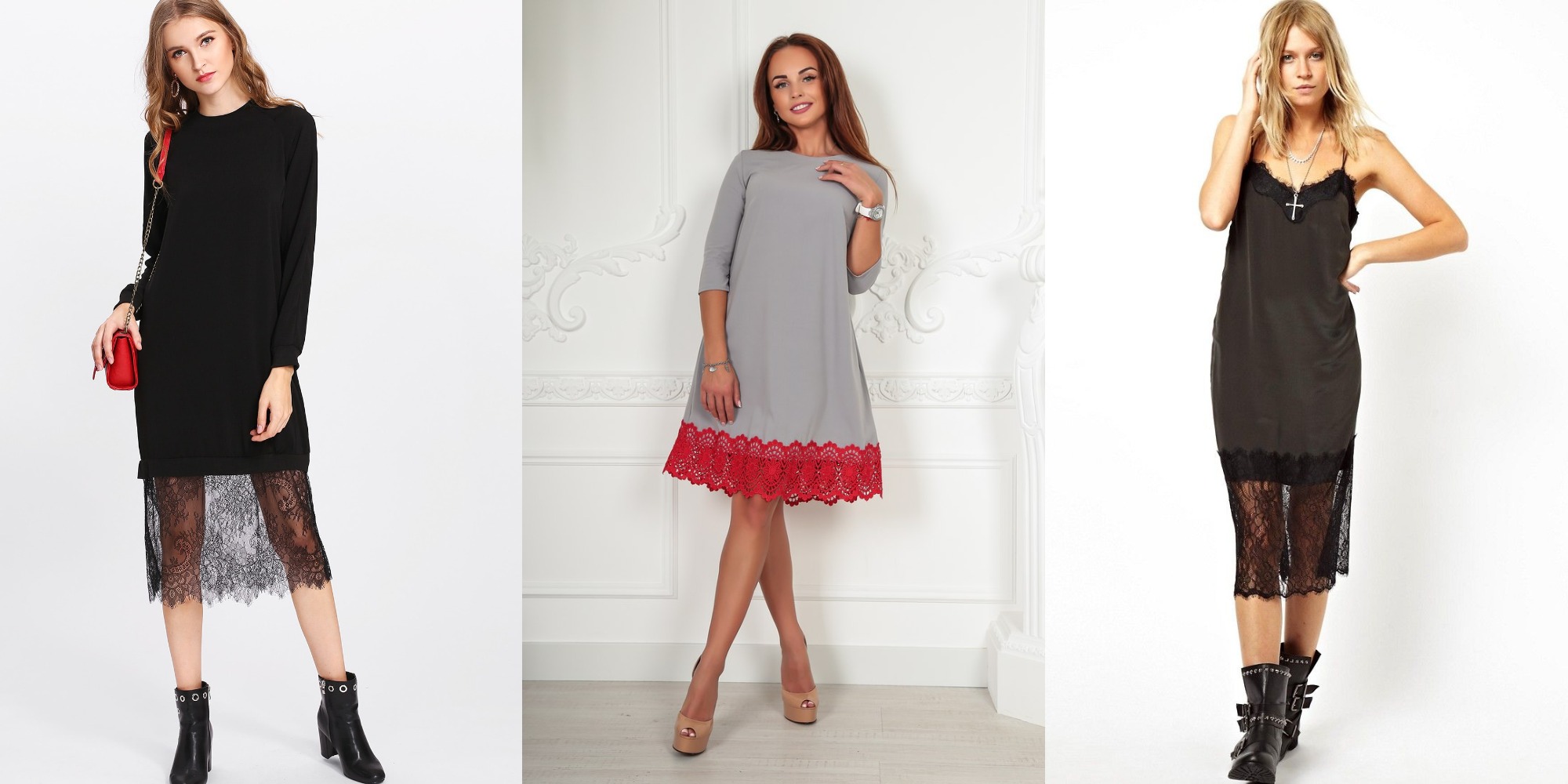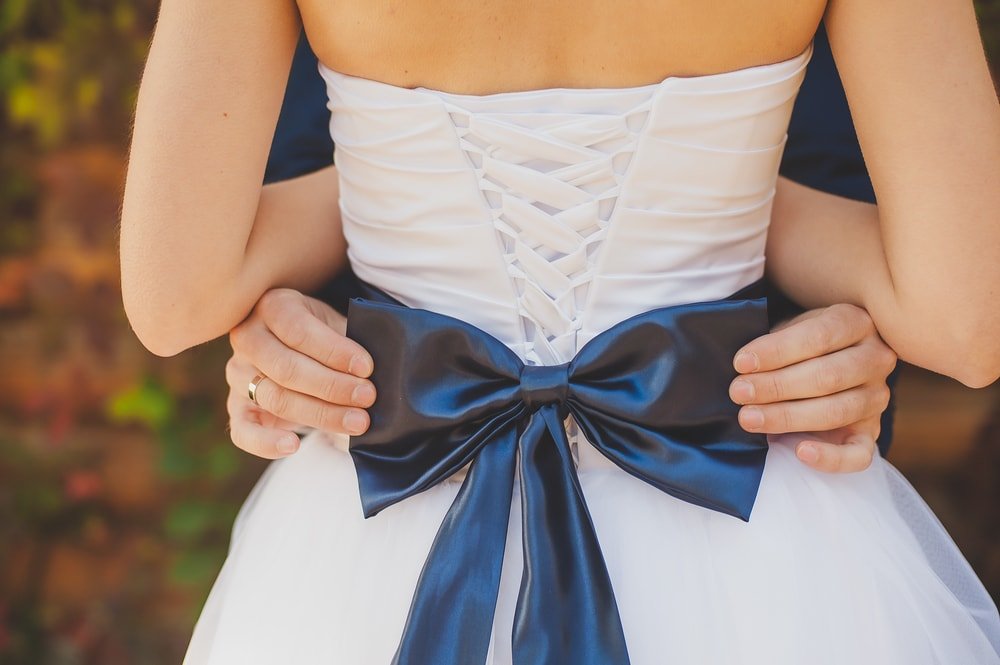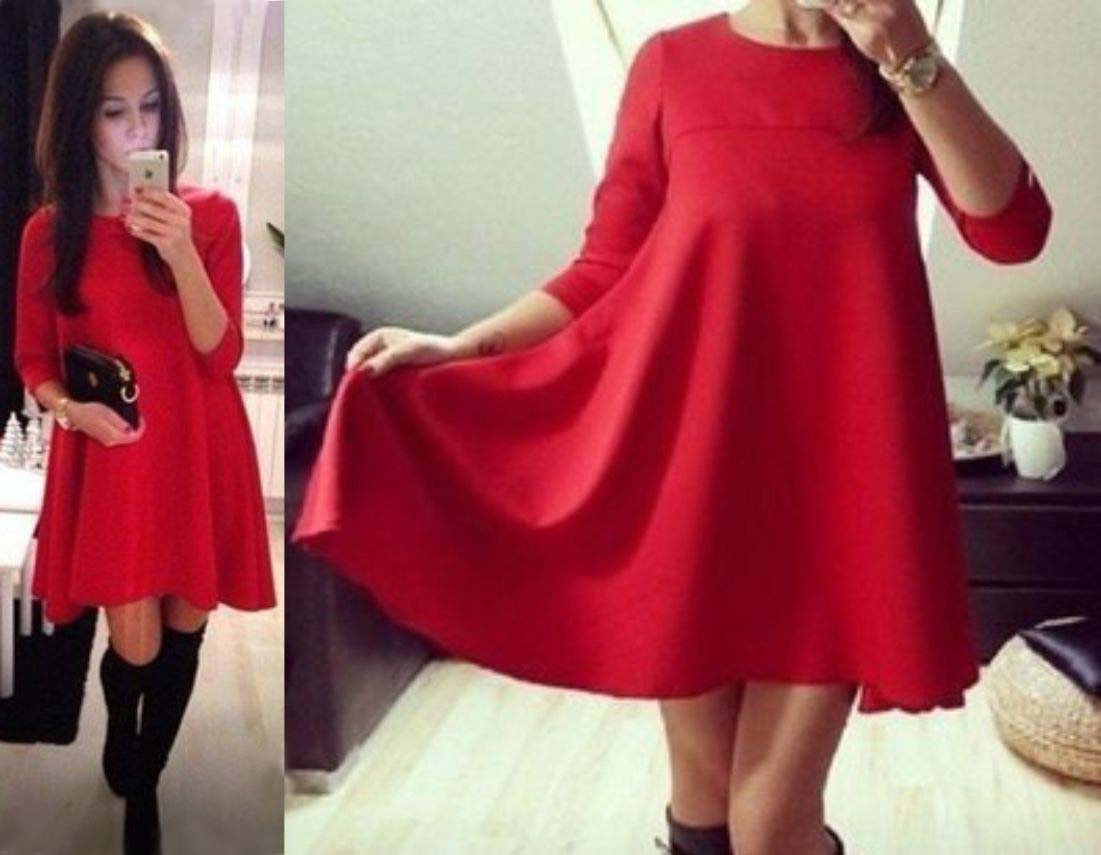A well-chosen dress can turn an ordinary girl into a real queen. But it is not always easy to understand the range of styles designed for a particular type of figure. Often, a model suitable for tall, stately ladies may look ridiculous on a petite, thin woman, and an outfit that looked spectacular on a mannequin turns out to be a shapeless robe when trying on. Universal options save the situation - for example, a wrap dress, the pattern of which is easy to make, will suit absolutely all women. Having basic cutting and sewing skills, you can make such a model with your own hands. The main thing is to choose the right fabric, take into account the subtleties of tailoring and pay attention to the tips of experienced craftswomen.
Features of the style
The first wrap dresses appeared in the 1930s, when they were not very diverse and were intended exclusively for home use. 40 years later, designer Diane von Furstenberg took on the reincarnation of the product, and then for many decades, famous fashion houses made their own adjustments to it.
The following features made the model popular:
- ease of use – easy to put on and take off;
- looks stylish and elegant;
- does not cause discomfort when worn;
- Suitable for all women, regardless of body type, height and age;
- visually emphasizes the advantages and hides the disadvantages of the figure;
- versatility – can be used in everyday life, for business meetings, special events;
- in most cases, it does not include any awkward buttons or zippers.
The modern dress is characterized by the fact that its front panel is divided into 2 parts that overlap one another, although these elements can also be one-piece.
You can sew a wrap dress at home with your own hands.
Popular models
Before sewing a wrap dress, you need to decide on the style that suits you.The product has not been classic for a long time; today fashionistas are offered numerous variations, the main ones of which are presented in the table.
| Type | Characteristic |
| V-neck | This style allows you to highlight the chest, makes the silhouette balanced. Thanks to the neckline, the neck is visually lengthened. Suitable for women of any height and build |
| Smell on the bodice | It can reach not only to the waist, many models provide for a wrap along the entire length of the product. The neckline favorably emphasizes the chest. In such dresses, the hem is usually one-piece. Drapery is used as a decorative element. The style is not recommended for ladies with too lush breasts |
| Smell on the back | The model looks attractive, unusual and stylish. A triangular nudity is created on the back. The depth of the neckline can be different. A sheath dress is often decorated with such an element. However, if the neckline is too deep, it will only be appropriate for evening wear. |
| Smell on buttons | This pattern of the classic Diane von Furstenberg wrap dress provides for a strong fixation of one half of the fabric from the inside with buttons. The legs remain open. If the dress is made in a business style, its cut will be strict, and the color will not be very bright. The model is universal, suitable for any age and figure. Limitation - low height |
| With sleeves | If a fashionista wants to wear a wrap dress, it is better to make a pattern with sleeves. This type of product will suit ladies with curvy shapes or women with an "inverted triangle" figure the most. The sleeves can be long or short. The optimal figure is 3/4 |
| Wrap skirt | In this case, the bodice will be one-piece. This style will suit girls with curvy hips. |
| One-piece scent | It is a fragment of the dress itself and is fixed with a seam. The style is preferable for girls whose height is above average. |
A wrap-around floor-length dress is suitable for those fashionistas who do not like constrained movements, an abundance of fasteners, but at the same time do not mind showing off expressive parts of the body to others.
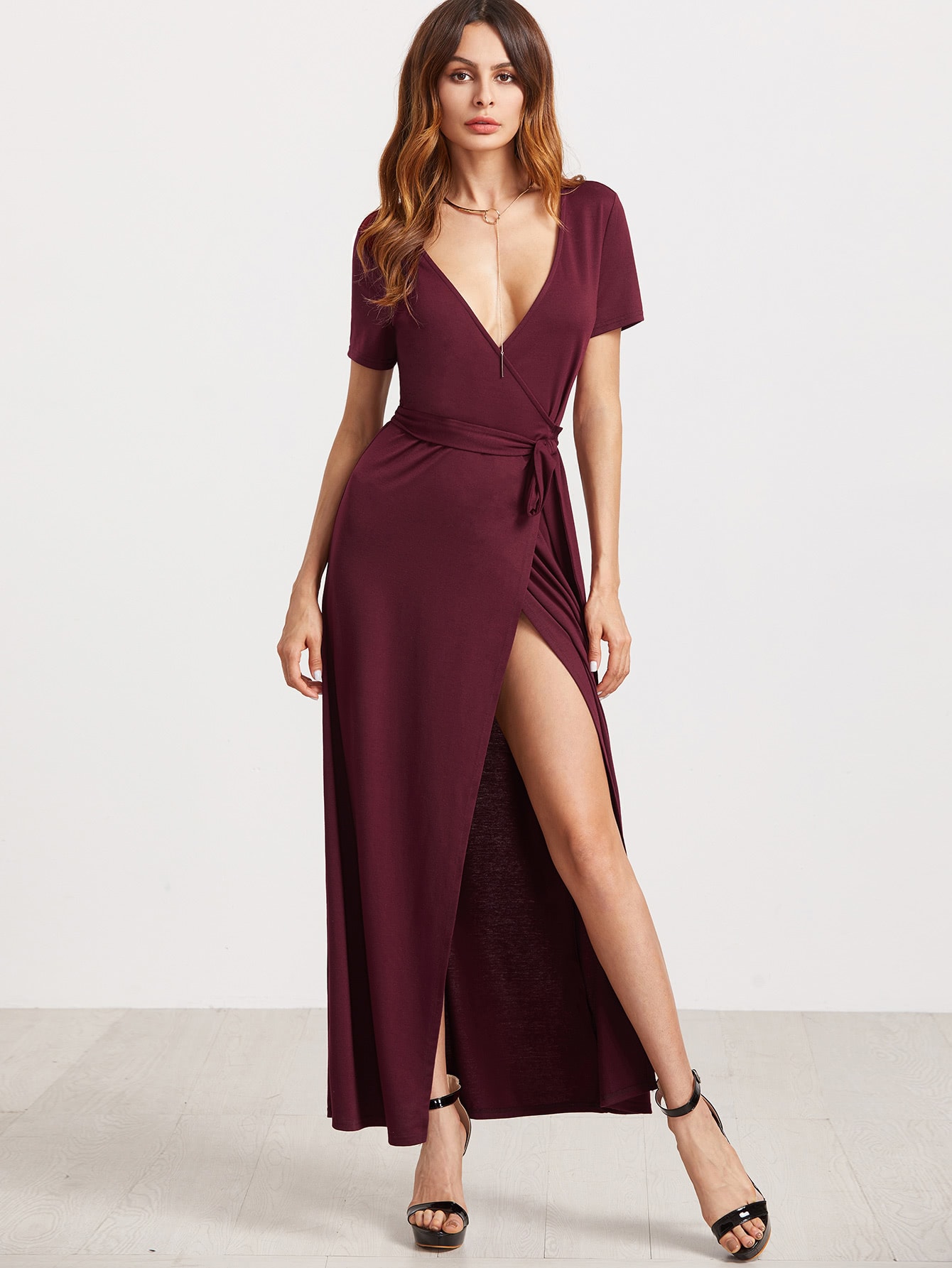
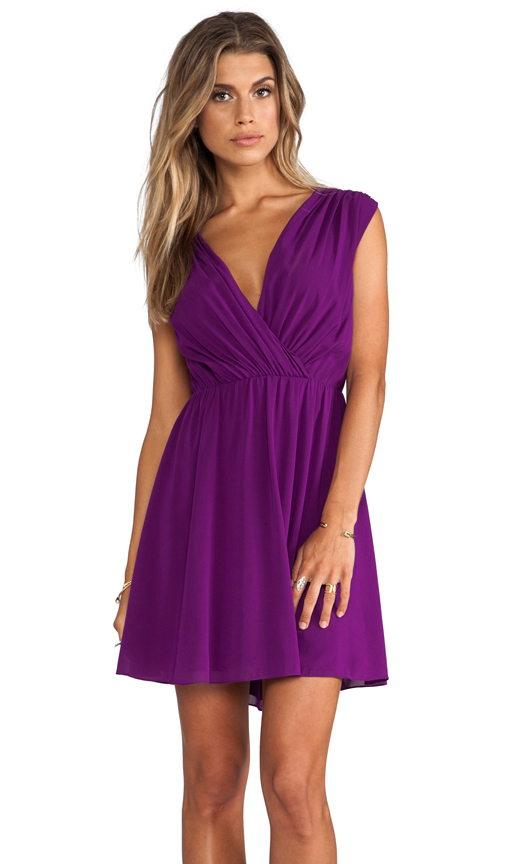


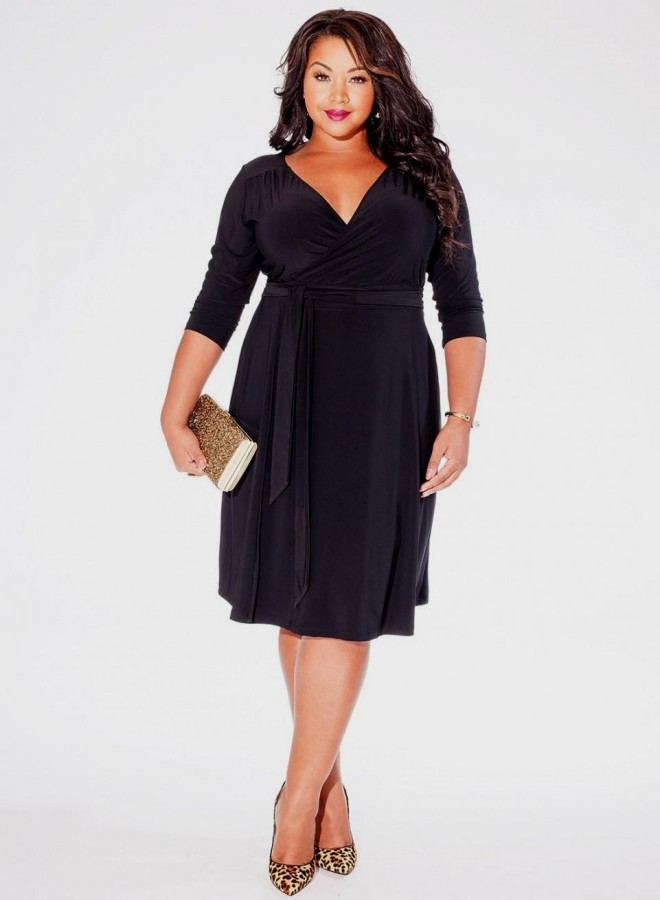
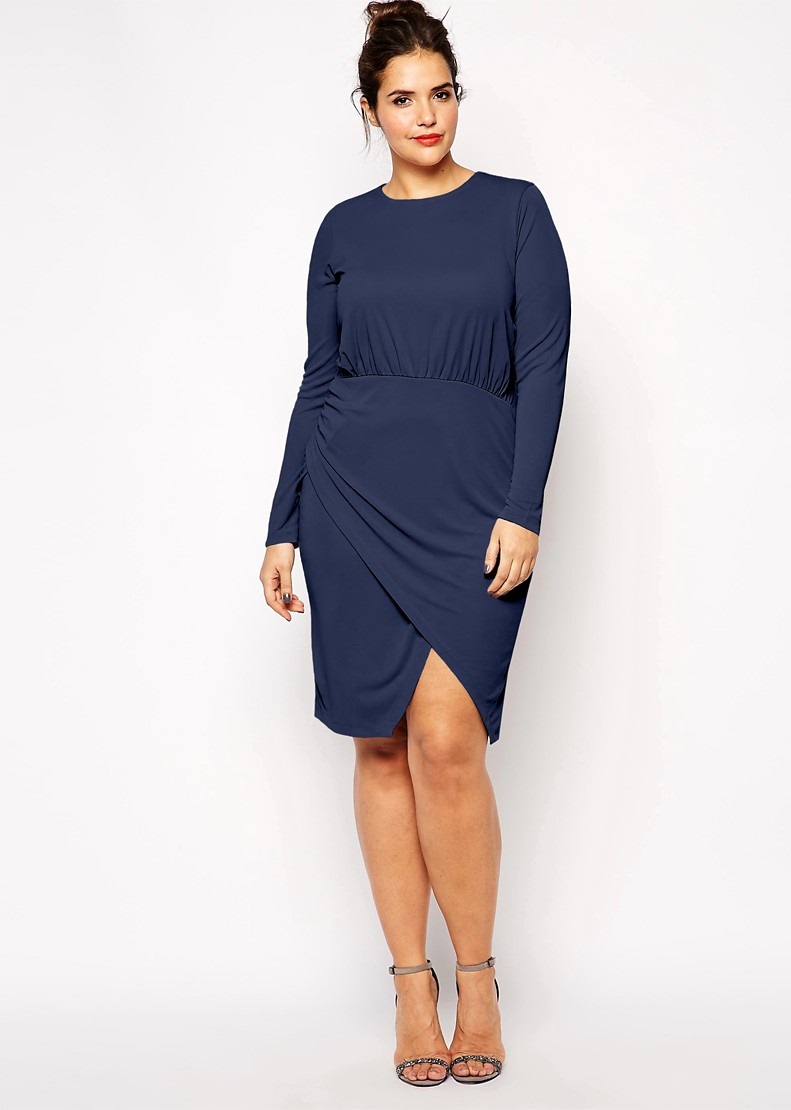
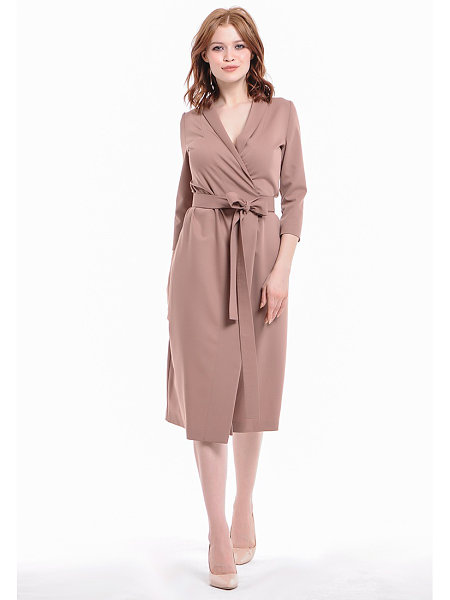
Length
The pattern of a wrap dress on the bodice is made after taking measurements and determining the length of the product. The model can be like this:
- Long. It is usually worn for special occasions. This model can often be seen on the red carpet. The pattern of a long wrap dress will suit women with any parameters, although you will have to make adjustments for your build. Brightly colored styles that look stylish and elegant are used for special occasions. Long dresses made of lightweight material with prints or patterns can be worn every day. A model with a sleeve will look more impressive.
- Midi. This is a classic option that will suit almost any occasion. But it is important to remember that the skirt should not fall below the fullest part of the calves. This style can be chosen by ladies of any age with any figure. However, it will look most harmonious on the "triangle" type.
- Mini. This type includes a summer wrap dress. The model often resembles a sheath dress or a tunic, it balances the figure. It fits perfectly on slender girls with beautiful legs.
The choice of length depends on the woman's taste and her figure type. You also need to consider the purpose for which the dress will be used - a mini is unlikely to be appropriate in the office, and a floor-length dress will be inconvenient for long city walks.
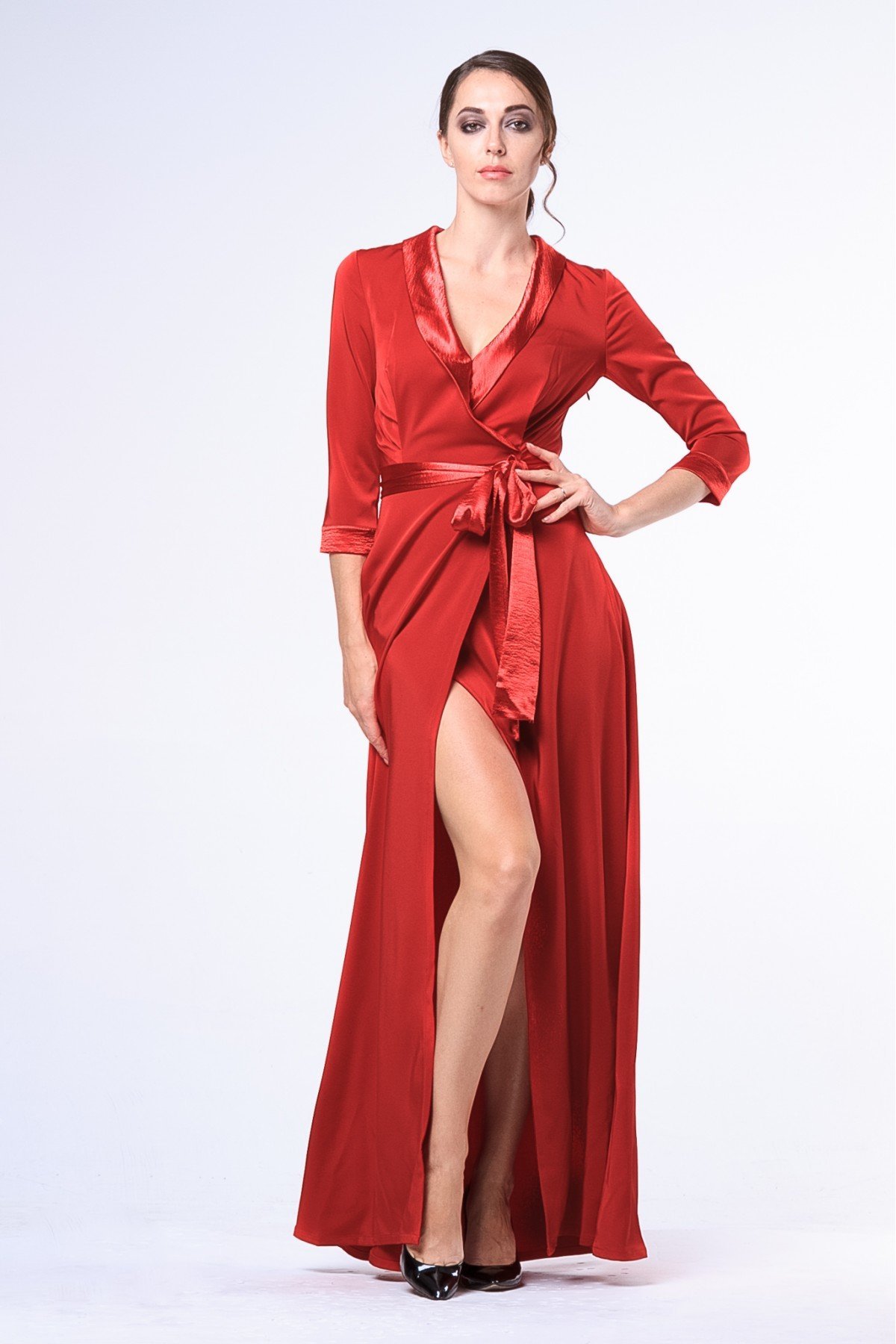
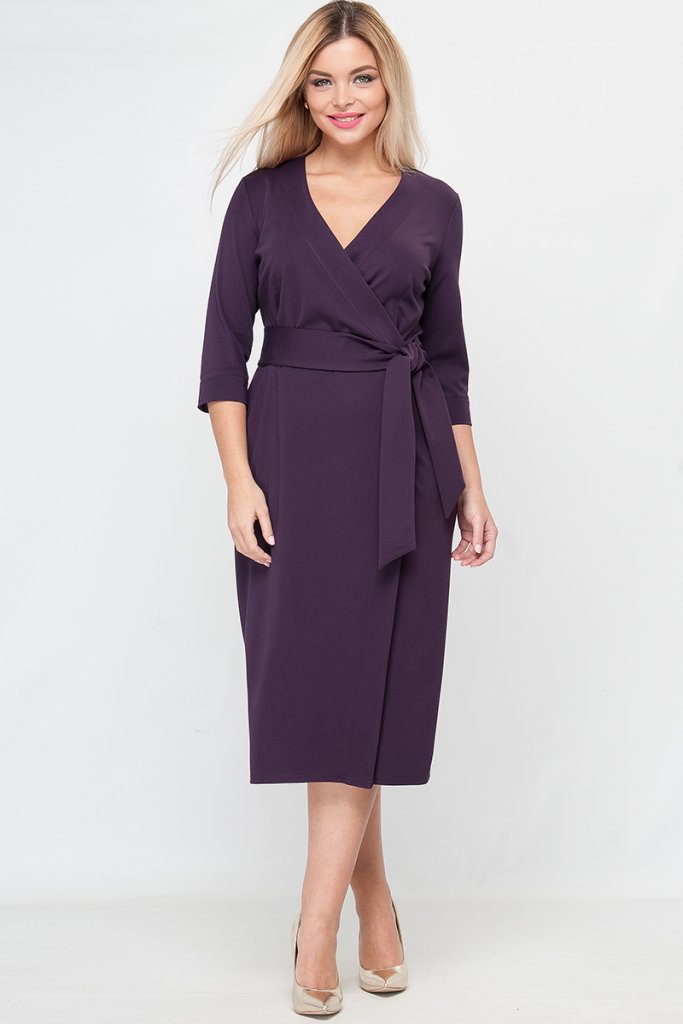
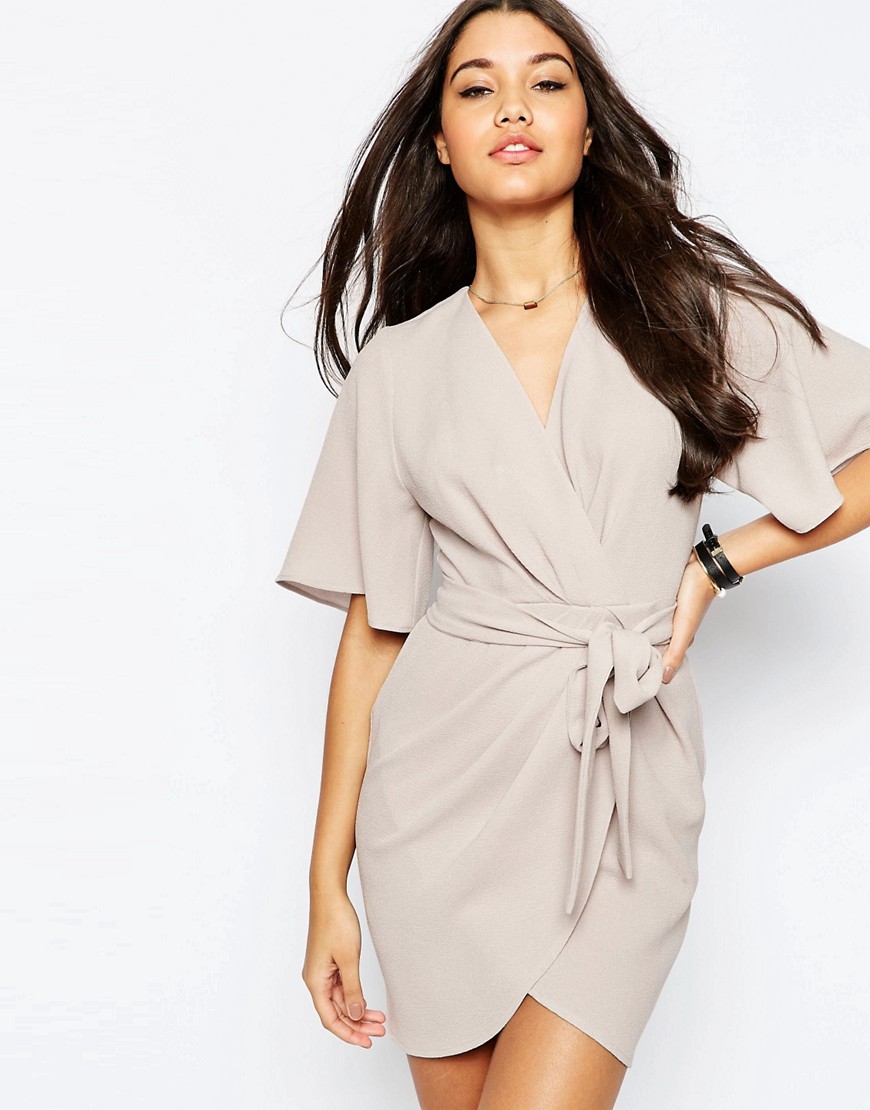
Materials of manufacture
Choosing the right fabric is another important step in learning how to make a wrap dress with your own hands. For summer products, linen, cotton or other lightweight fabric is used, the colors can be bright. In winter, it is better to give preference to warm material: thick knitwear, knitted fabric. In the spring-autumn season, midi-length models made of medium-density fabric are used.
Each option has its own nuances:
- Thin leather. Natural material and high-quality artificial analogue always remain in trend. Leather can be used in business style, for everyday wear, a simple pattern of a robe dress is assumed for sewing. The finished product can be combined with any shoes, even sports ones. But to use such an image, a girl will need a certain courage.
- Knitted fabric. Used to make warm models. The features of the material, including a dense texture, suggest its use by slender fashionistas. If you use a thin thread, you can knit a summer beach dress. It is important to remember that such products require proper care.
- Knitwear. It is used to make models for different seasons. The material is soft enough and is used for everyday and festive dresses. Jersey is an ideal option: the outfit is easy to wear, does not require ironing or special washing conditions.
- Chiffon. A wrap dress pattern with straps is often used here. The material is very light, translucent, and can be used to sew airy festive models. Ruffles or flounces are suitable for decoration.
- Silk or satin. Noble fabrics that allow you to make a model that will look rich, thin, and elegant. Often, when using silk, a dress pattern with drapery is taken, and embroidery or fringe traditionally serves as decoration.
- Lace. Will help to create a delicate, refined, romantic image. Silk is used as a lining fabric. Dresses of this type are ideal for young girls with a slender figure.
When using satin fabric, you need to keep in mind that shiny material is more suitable for thin women, and matte material is more suitable for full women.
As for the color scheme, red, black, white and blue materials are often used to sew wrap dresses. Often there are multi-colored bright products, models with floral prints. The most preferred pattern for a dress of this style remains vertical stripes.
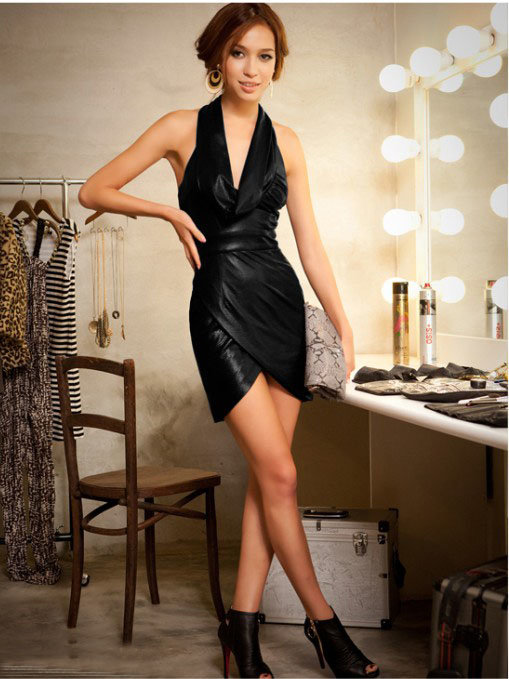
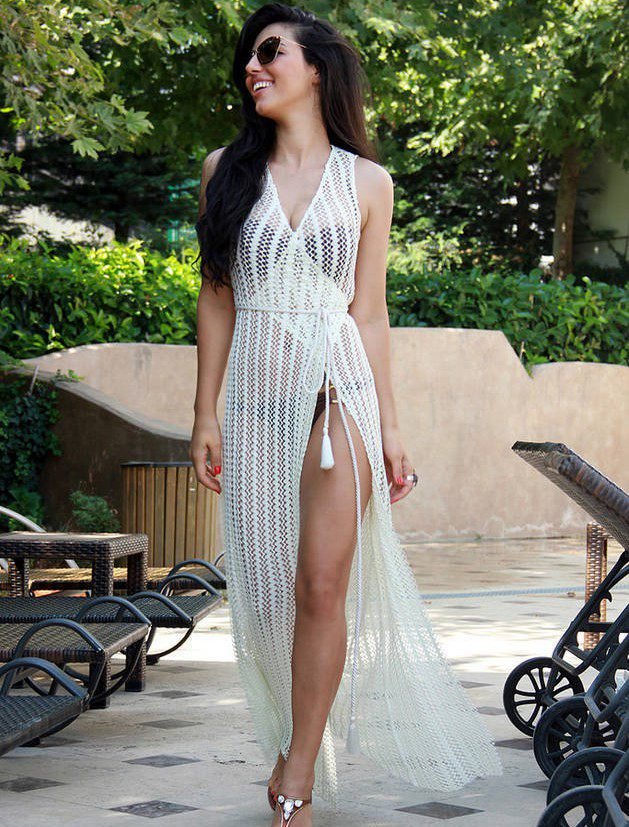
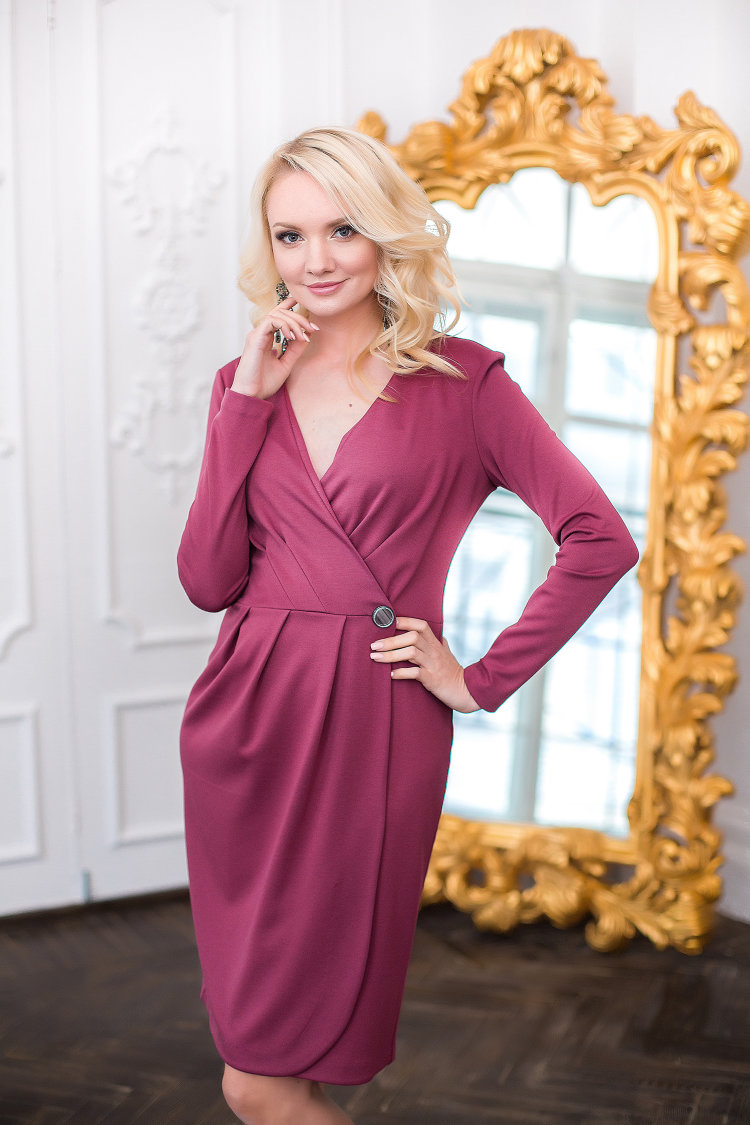


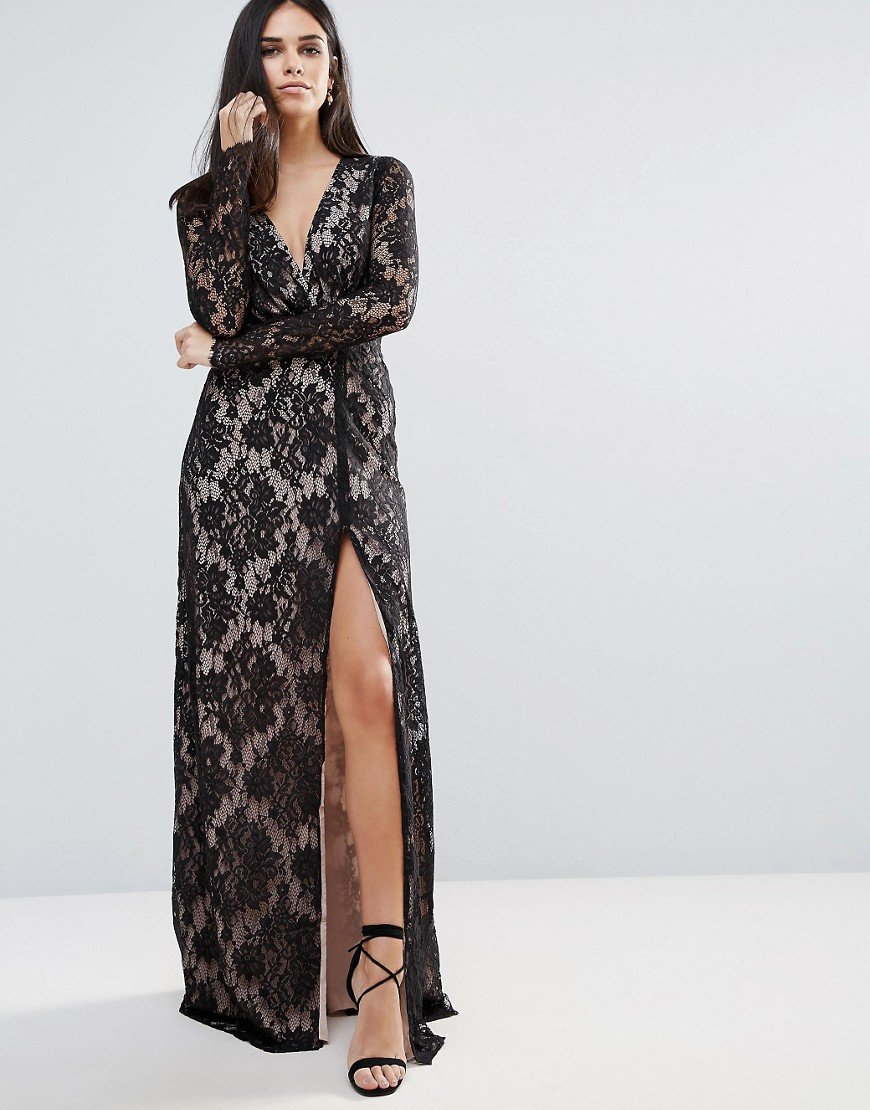
Construction of the pattern
Creating a pattern for a wrap dress is the most important step in making your own outfit. First, you will need to take measurements, indicating the following parameters: chest, neck, waist, hips, back width, shoulder length and sleeves, if provided. Based on these values, a basic pattern is built - even experienced craftswomen will not always be able to sew a wrap dress without a pattern.
In order to make patterns, it is better for a beginner to transfer the contours onto a large sheet of paper:
- First, it is determined which side of the shelf will be the top. If the wrap is provided from left to right, on the opposite side on the waist line it is necessary to put a point that connects with the bottom point of the neck. After this, the pattern is completely outlined.
- To model the smell, you need to mark the width of this element on the side opposite to its edge. The resulting point should be connected to the end of the smell with a straight line.
- The lower part of the dress is made according to the basic pattern.
- To model the back, you need to draw darts on the convexity of the shoulder blades.
- To sew a skirt, you need to decide whether it will be flared or tapered. In the second case, all the darts on the basic pattern are preserved.
Once the dress pattern is complete, you need to start cutting the fabric. To do this, fold it in half along the grain line. The edges should be correctly aligned, and the middle of the back piece should match the fold. The remaining elements should be laid out on the material so that as little waste as possible remains.
Before sewing a wrap maxi dress, you need to cut out all the necessary details:
- front and sleeves – 2 pieces each;
- skirt – 2 parts;
- parts with a fold along the back - 1 piece.
If the fabric is stretchy, seam allowances are not made.
Modeling a pattern for a wrap-around beach dress follows a similar pattern.
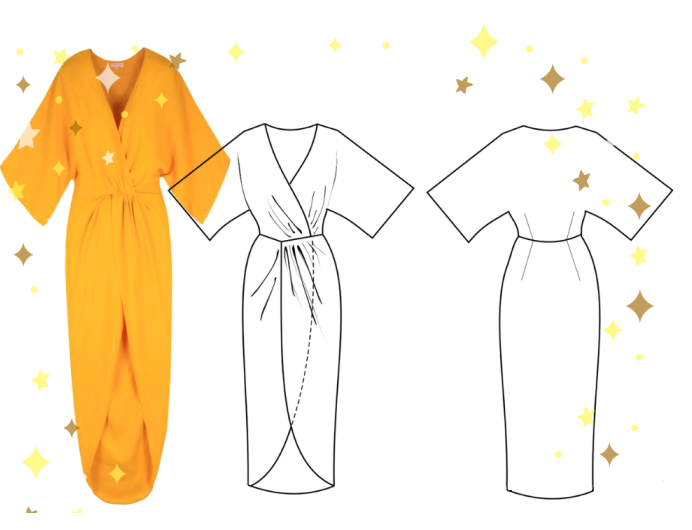
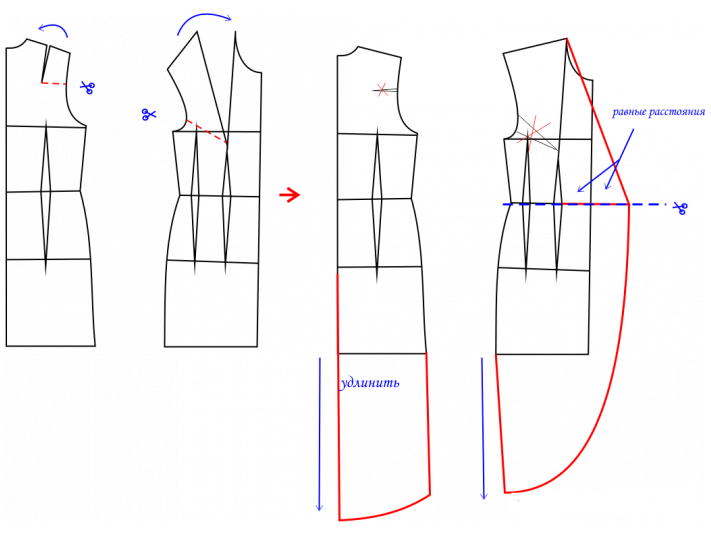
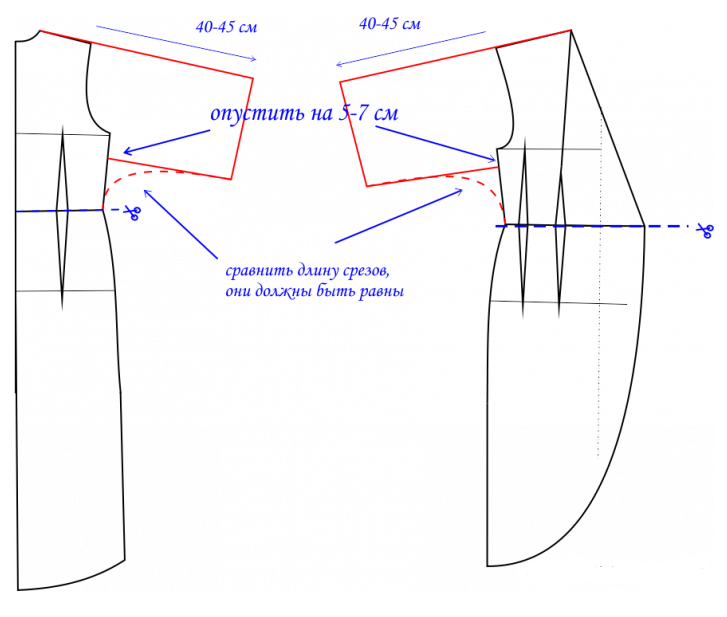
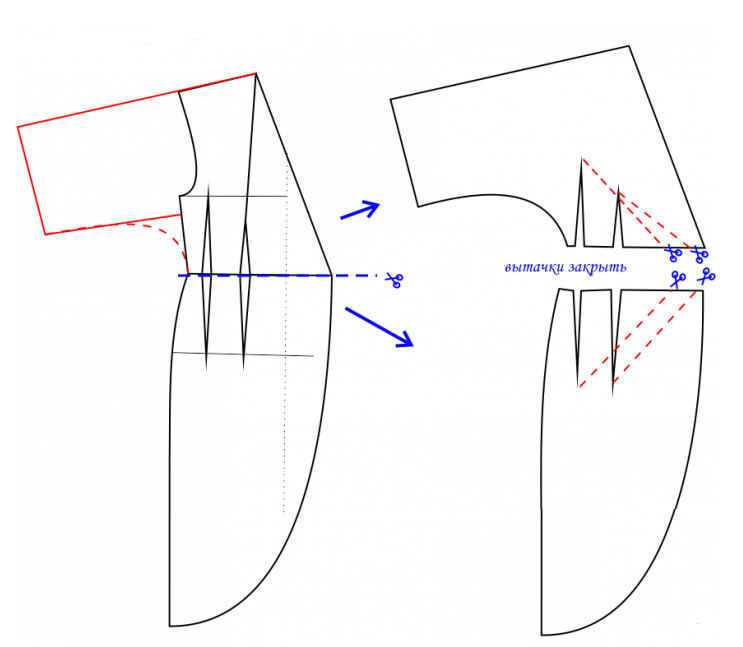
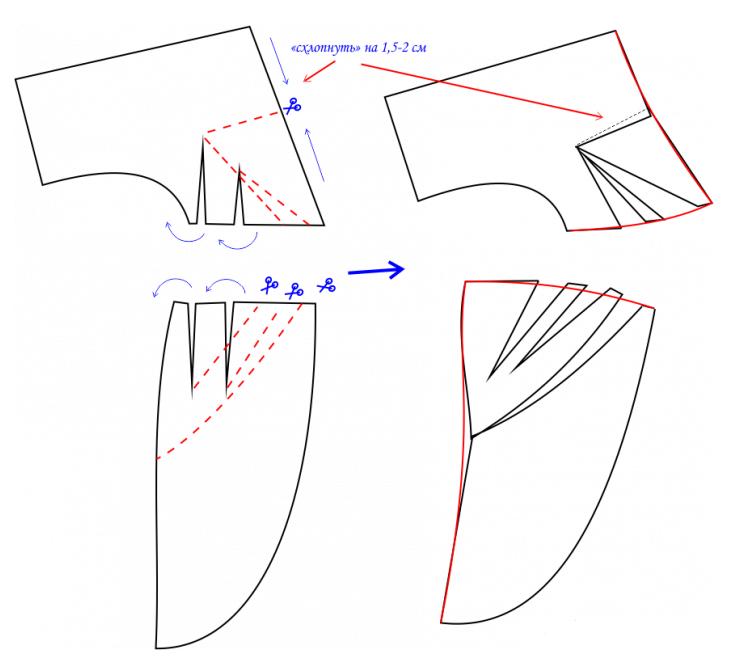
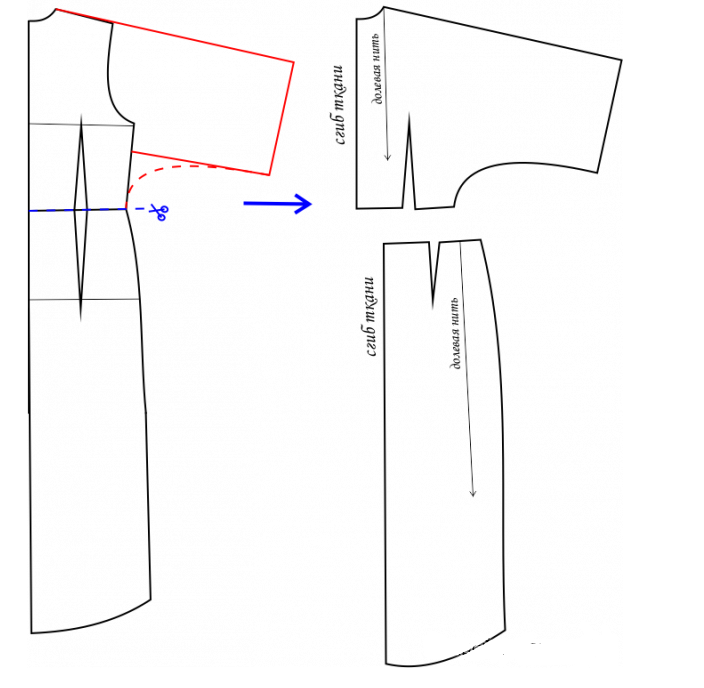
Step by step sewing process
If you have ready-made pieces of fabric, you will need to connect them. A beautiful robe dress is made with your own hands according to the following algorithm:
- Sew all darts.
- Sweep and stitch the seams on the sides and shoulders.
- Iron the seam allowances and overcast.
- First, connect the sleeve to the base along the main seam, and then baste it to the shoulder cap. Next, align the control points and sew in this element.
- At this stage, the product needs to be tried on in order to correct any inaccuracies in time.
- The next step involves processing the edge of the fold, as well as the neck.
- The bottom of the garment is hemmed last.
The pattern of a plus size wrap dress is adjusted according to the girl's measurements. The edges of the fabric need to be processed so that they do not unravel - for this purpose, you can use additional elements: bias tape, a cut.
To fully understand how to sew a wrap dress correctly, you need to pay attention to some nuances. To prevent the wrap from sagging, it needs to be processed correctly, for which several methods are provided:
- If the lower and upper parts were constructed using the same pattern, a small button is attached to the upper part at the waistline, and a loop is sewn on the edge of the lower part of the dress.
- If the model is made of chiffon or other light fabric, the wrap can be fixed with ties.
The draping of a wrap dress should be modeled at the pattern making stage.
This type of model favorably emphasizes the advantages of the figure, and its additional advantage is the possibility of self-tailoring. Such a solution will help save money, will allow you to embody your most daring ideas in the outfit. Provided that the pattern of the wrap dress is constructed correctly, you can get a universal model that will perfectly fit into the wardrobe of every modern woman.
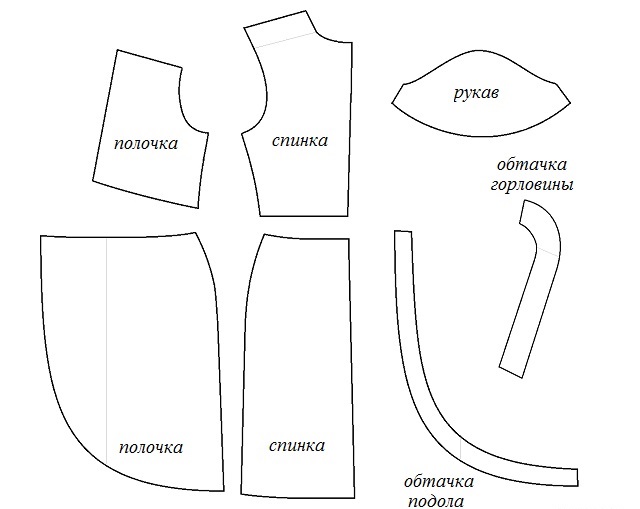
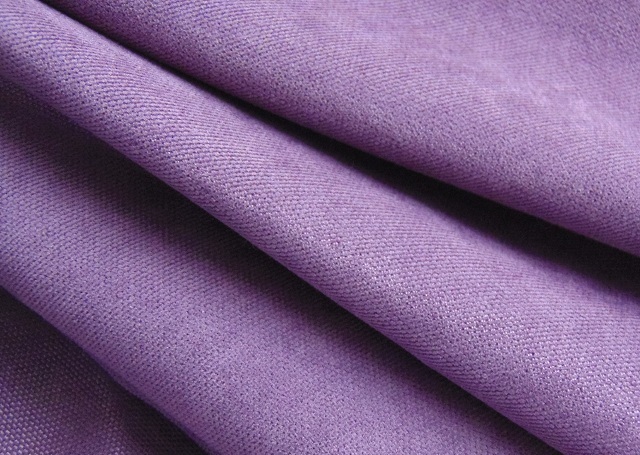



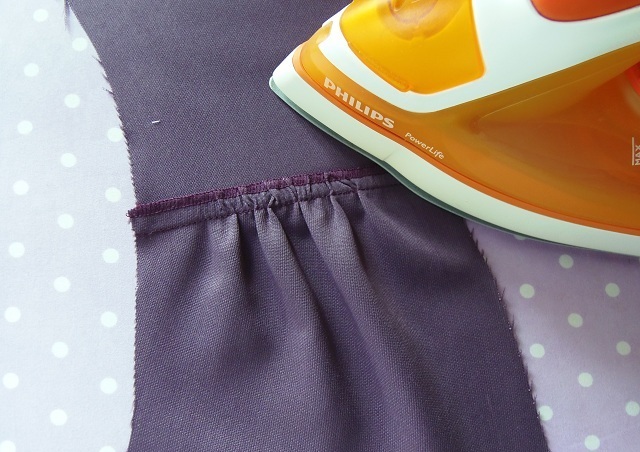
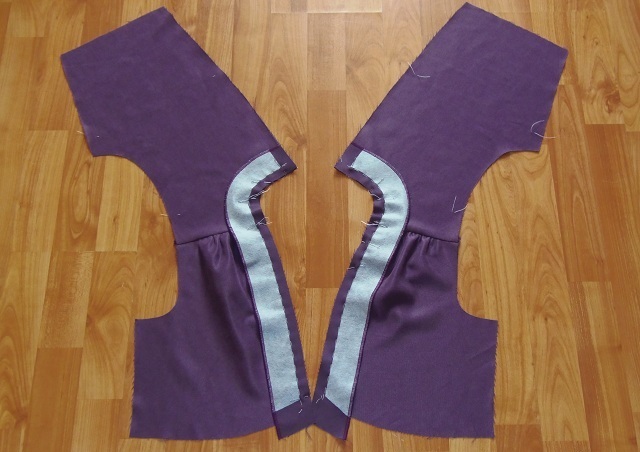

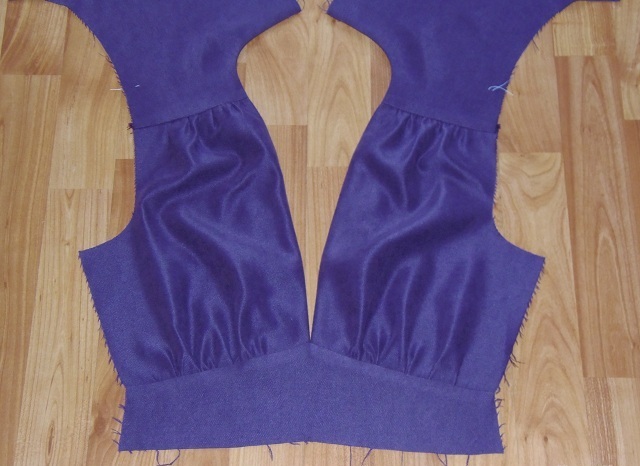
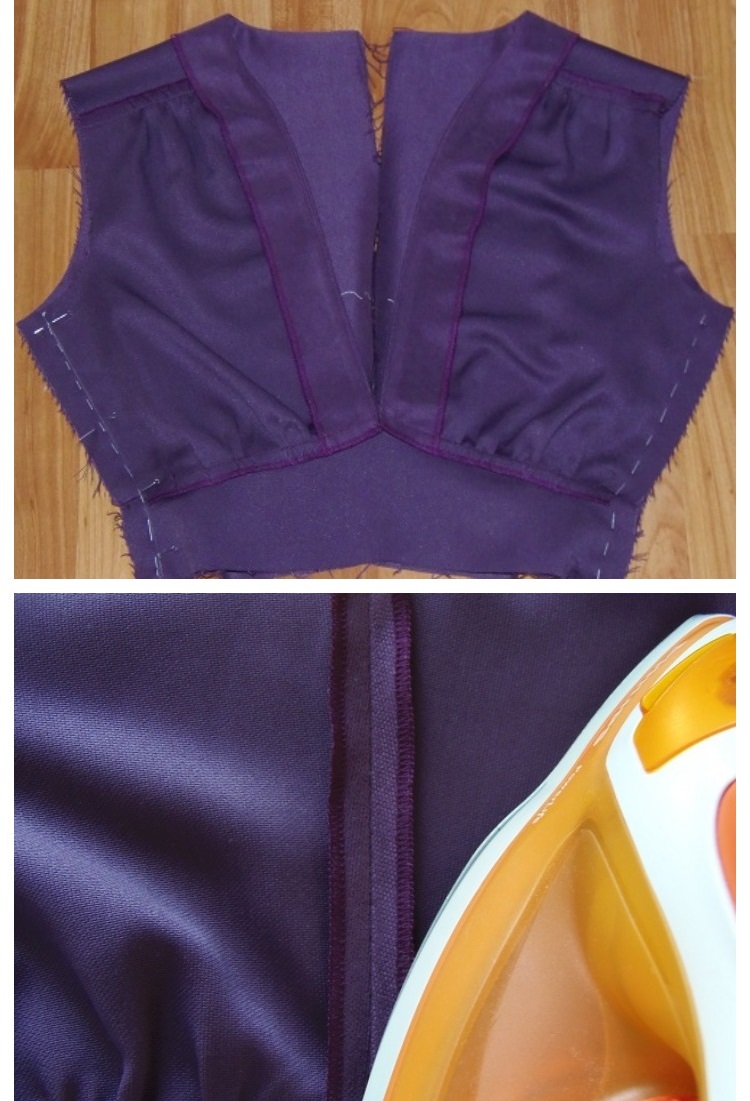
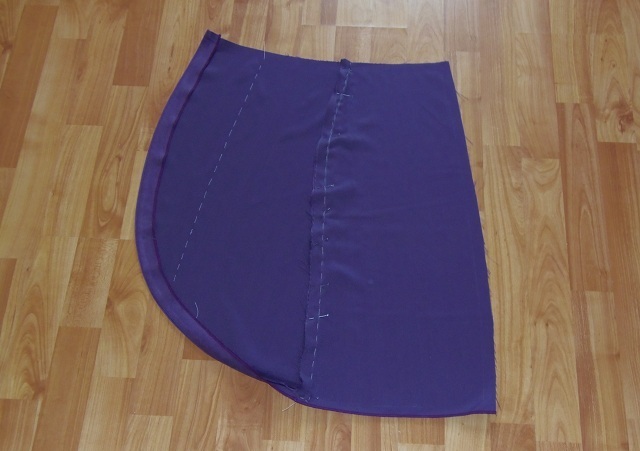
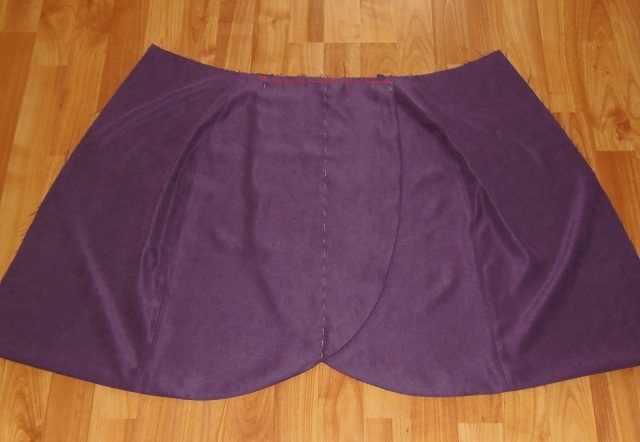



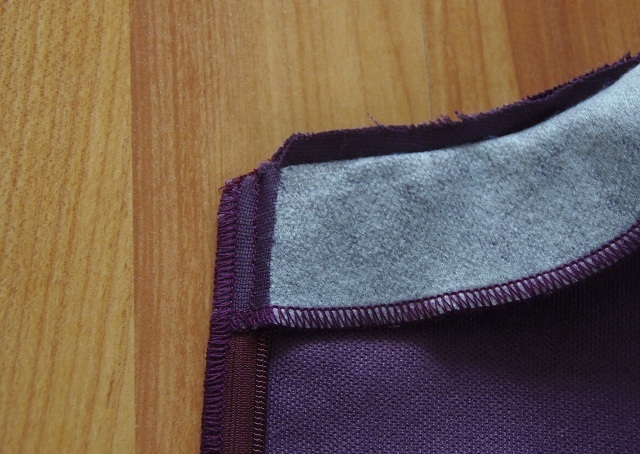
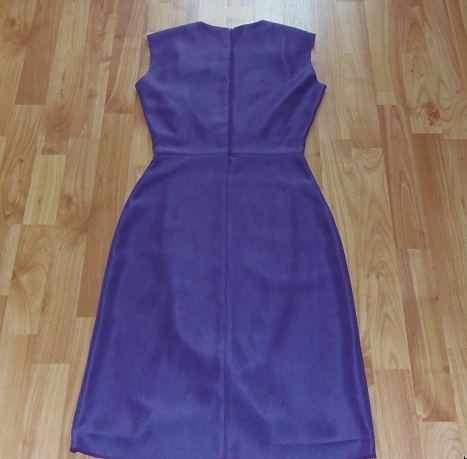
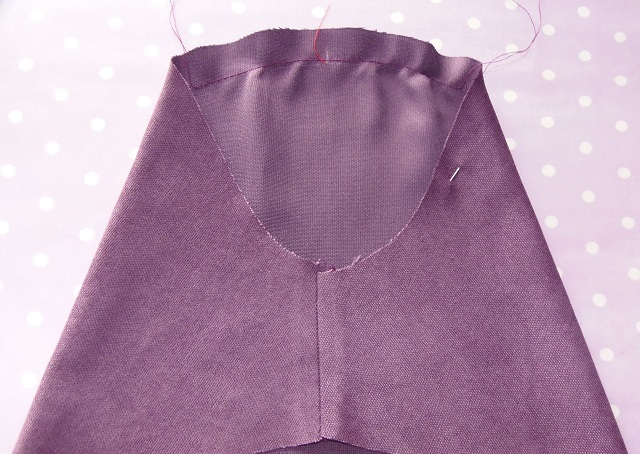

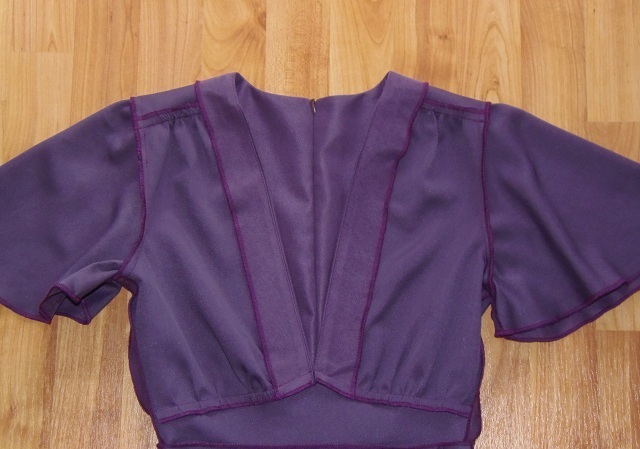
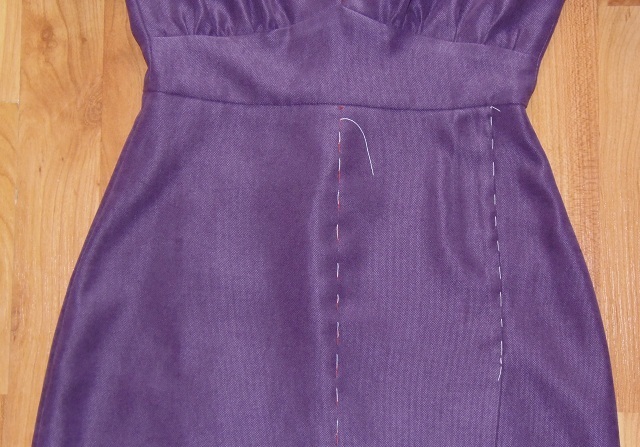

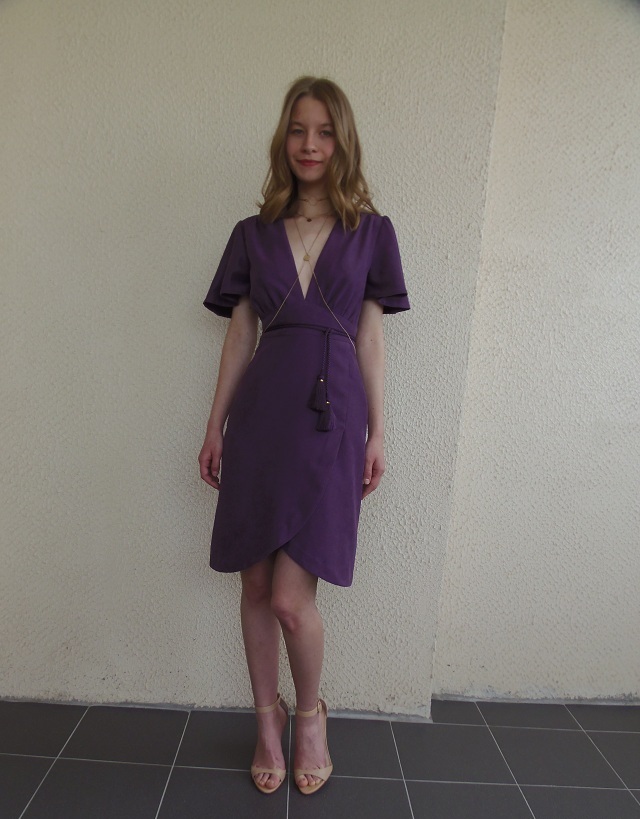
Video


